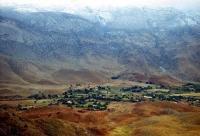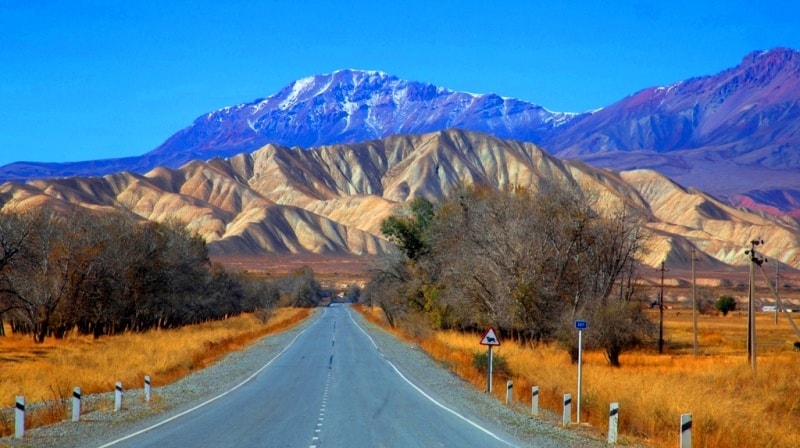Вы здесь
Southwestern Pamir-Alai.



Photo tours in mountains of Pamir-Alai.
“Not all those who wander are lost”
J.R.R. Tolkien.
Botanical Holidays in Tajikistan.
The mountains of the Southwestern Pamir-Alai form the so-called West Tajik Depression, sometimes known as the South Tajik (Schukin, 1956) or simply Tajik (Varentsov et al., 1977], it is also called the "low mountains of Southern Tajikistan" (Schukin, 1983), although many of the ranges here exceed 2000 meters above sea level.
The word "depression" does not fit the described territory. It is an area of low and medium mountain ranges, lowered only relative to the surrounding mountains - Gissaro-Alai, Pamir and Hindu Kush. bounded from the northwest by a gentle arc of the Ba ridges Suntau and Kugitangtau - the extreme southwestern spurs of the Gissar ridge.
Before this territory was entirely attributed to the Pre-Pamir marginal trough of the Pamir region of the Al -pi-Himalayan geosynclinal belt (the Cenozoic geosynclinal Tethys), now only a relatively narrow strip in the east.
Most of the Southwestern Pamir-Alai belongs to the Epigercin platform and has the folding of the Meso-Cenozoic sedimentary cover, due to movements along the fault lines of the Hercynian intensively folded base.
These faults and folds of the Meso-Cenozoic cover, going from the north-east to the south-west, do not coincide with the sub-latitudinal strike of the Hercynian base structures, but correspond to the strike of the structures of the western part of the adjacent Pamir region of the Alpine folding region, the development of which education.
The main parts of the territory belong to Tajikistan, the western - to Uzbekistan (the western frame enters Turkmenistan). Many relatively low folded ridges stretch from the north-east to the west and south-south-west.
In terms of planes, they are slightly curved and, like the line of the framing Baysuntau-Kugitangtau ridges, face the bulge to the northwest. The ridges are composed of Mesozoic (mainly Cretaceous), Paleogene and partially Neogene sedimentary strata with a large role of carbonate and silty-clay mottled and colored rocks.
Typically expressed are the structural forms of relief, in particular, cuestic and cuestic ridges on terrain folds. Cross gorges in limestones have the character of narrow gorges and canyons. The valleys, slopes, and often the crests of the ranges are terraced.
In limestones, gypsum-bearing and saline deposits, karst phenomena are developed. Significant sizes (up to 3 kilometers of total length) and leaky and drip formations of gypsum and marble onyx stand Karlyuk caves and the Kugitangtau ridge.
In the same ridge and the Baysuntau ridge, gypsum karst is intensively developed in some places (there is a place called “a thousand pits” because of the abundance of Mingchukur karst craters), and in the salt domes of the Kulyab district of Tajikistan (in the southeastern part territories) various forms of salt karst are intensively developed (Gvozdetsky, 1981).
The piedmont plains and bottoms between the ridge ranges of the valleys are occupied by oasis lands, desert and semi-desert subtropical landscapes, ephemeral and wormwood and ephemeral, partly sandy deserts (near the Pyanj River).
Above them are located, framing the lower parts of the ridges, subtropical semi-desert dissected low mountains, often loessic, with ephemeral and wormwood and ¬ ephemeral vegetation. The following high-altitude zone is formed by subtropical mountain and steppe landscape.
Large grasses of the steppe, divided by low mountains and middle mountains, partly with shrubs, steppe dissected low mountains with xerophytic shrubberies and pistachio sparse forests, steppe dissected middle mountains with shrubberies (exochorda, wild rose).
Juniper and woodland dominate the mountain steppes on the highest parts of the ranges (high mid-mountain), related to the forest, meadow and steppe high-altitude zones. In different altitude zones there are areas with landscapes of bare, partially sodded salt and gypsum karst, as well as gypsum karst with juniper sparse wood (on the Baysuntau ridge).
The described territory is a mining region. There is lead here. Aggregates are represented by oil and gas, coal, sulfur, and produce potash and salt. Oil and gas fields were discovered in the Vakhsh valley (Kichik-Bel, Kzyl-Tonshuk), gas - on the site of the Kugitangtau ridge.
There are also cement raw materials and other building materials. The commissioning of the Nurek and Baipazinskaya hydroelectric power stations began the energy use of the Vakhsh River - the creation of a cascade of hydroelectric power stations on it.
In the valleys are the most important areas of sowing of fine-fiber cotton. On the lands irrigated by the Vakhsh system (approximately 60,000 ha), up to 80% of the total fine-fiber cotton planted in Tajikistan is concentrated.
Areas on the slopes and hills of the foothills in the Vakhsh Valley are used for planting lemons. This is an area of large irrigation construction sites. With the creation of the Baipazinsky waterworks, the Vakhta water irrigated the Yavan share.
Through the Vakhsh ridge laid Dangarinsky irrigation tunnel steppes. Here cotton-growing and orchard and grape villages have been created. Large-scale irrigation construction was carried out in the Beshkent valley of the Shaartuz region in the south of Tajikistan, where a waterworks on the Kafirnigan river, Beshkent main canal, an extensive irrigation network from closed sprinklers and reinforced concrete trays were constructed, land planning was carried out.
Here are cotton fields, vineyards and plantations of subtropical crops. On the territory of Uzbekistan, cotton masses are concentrated in the Surkhandarya Valley. For their irrigation, reservoirs have been created - Yuzhno-Surkhan and Sherabad.
On irrigated lands in the foothills and low mountains spread orchards and vineyards. Semi-desert low mountains and steppe middle mountains are used as pastures.

Authority:
Series Nature is the world. "The mountains". N A. Gvozdetsky, Yu.N. Golubchikov. Moscow "Thought". 1987.
Photos by
Alexander Petrov.







